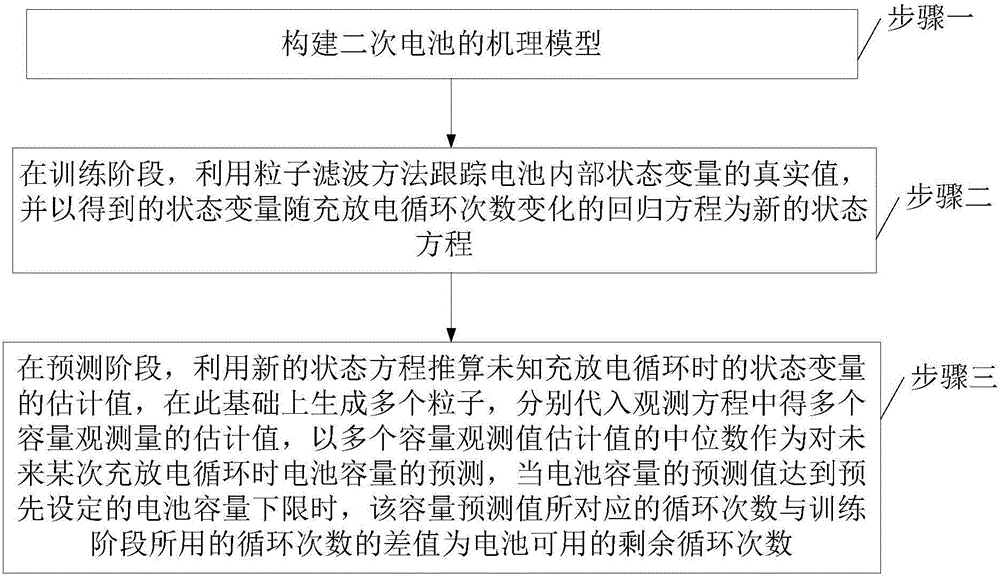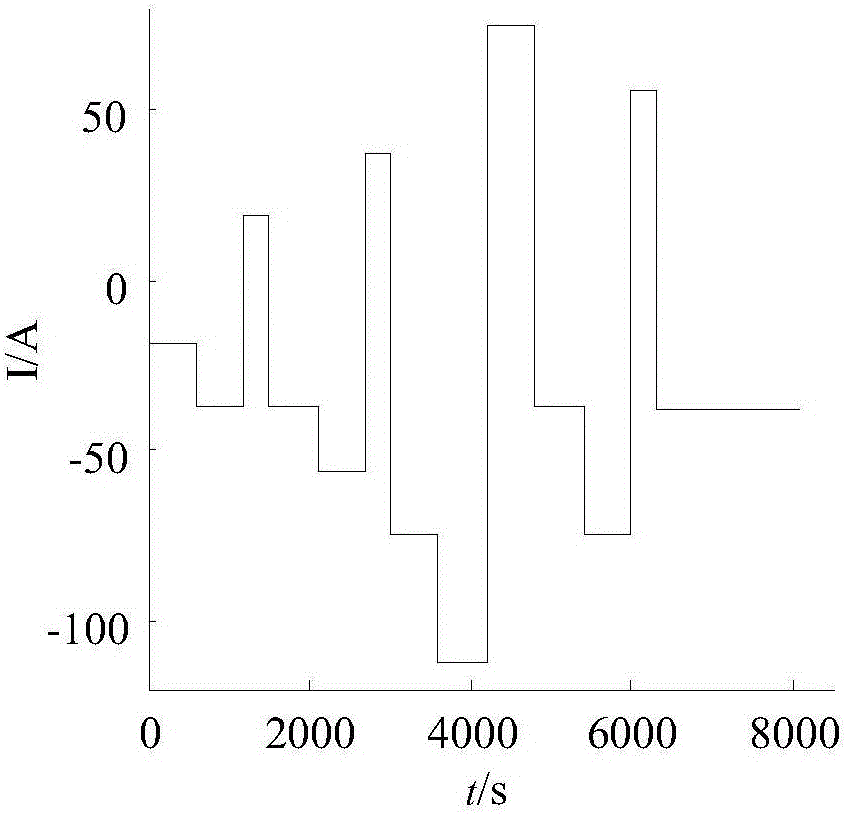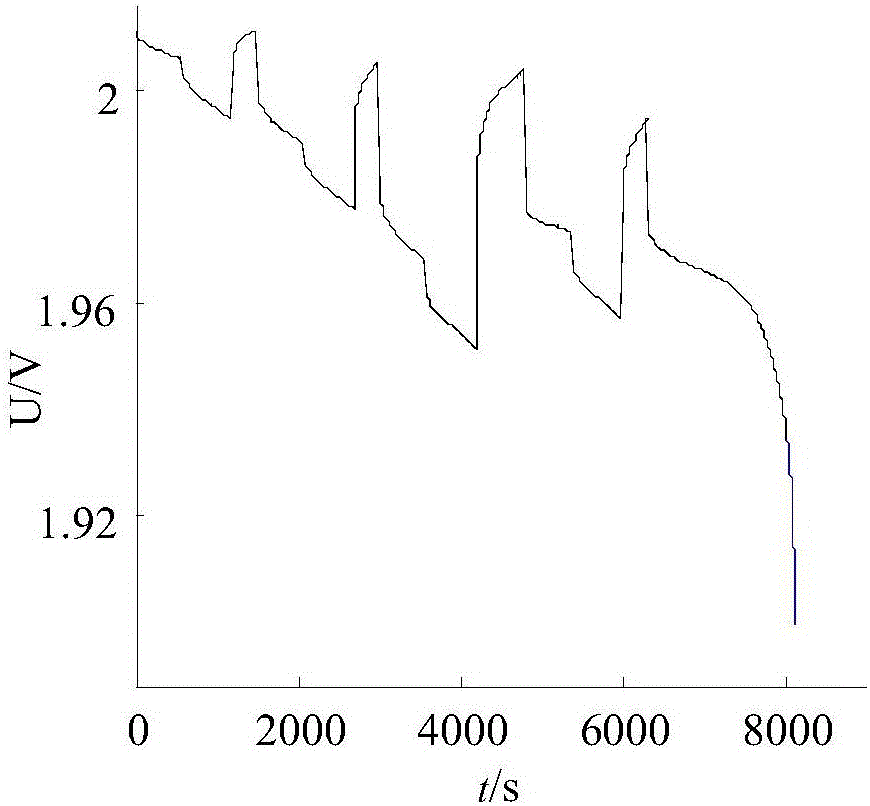Prediction method for life of secondary battery based on particle filter and mechanism model
A secondary battery and mechanism model technology, which is applied in the fields of electrical digital data processing, special data processing applications, instruments, etc., can solve the problems of poor accuracy of battery life prediction results and neglect of the mechanism characteristics of the prediction object, and achieve high accuracy and prediction The effect of error reduction and accurate prediction
- Summary
- Abstract
- Description
- Claims
- Application Information
AI Technical Summary
Problems solved by technology
Method used
Image
Examples
specific Embodiment approach 1
[0020] Specific implementation mode one: refer to Figure 1 to Figure 3 Specifically explain this embodiment, a secondary battery life prediction method that combines a particle filter and a mechanism model described in this embodiment, it includes the following content:
[0021] Step 1, constructing a mechanism model of the secondary battery, the mechanism model of the secondary battery can simulate the curve of the charging and discharging voltage of the battery as a function of time under any current condition;
[0022] Step 2. Training phase: Aging the secondary battery in step 1 under normal operating conditions for a period of time, and measuring the charging and discharging curves of the secondary battery during the aging process off-line with a fixed number of charge and discharge cycles at each interval using dynamic conditions. The voltage obtained at this time is the actual secondary battery output voltage U,
[0023] Input the same dynamic working condition curren...
specific Embodiment approach 2
[0059] Specific embodiment 2: This embodiment is a further description of the life prediction method of a secondary battery combined with a particle filter and a mechanism model described in specific embodiment 1. In this embodiment, in step 1, the secondary battery The mechanism model is:
[0060] U(t)=f[I(t), P(k)] (Formula 2),
[0061] In the formula, I(t) is the given current, f is the function map, P(k) is the parameter set of the secondary battery, k is the number of charge and discharge cycles, and the parameter set P changes with the increase of the number of charge and discharge k, U(t) is the external measurable voltage of the secondary battery.
specific Embodiment approach 3
[0062] Specific embodiment three: This embodiment is a further description of a secondary battery life prediction method that combines a particle filter and a mechanism model described in specific embodiment one. In this embodiment, in step two, the objective function is:
[0063]
[0064] In the formula, I(t) is the given current, P is the parameter set to be identified, S is the search space of the parameter set, N is the number of data points on the curve of voltage versus time, is the simulation output voltage of the mechanism model, and U is the actual battery output voltage.
PUM
 Login to View More
Login to View More Abstract
Description
Claims
Application Information
 Login to View More
Login to View More - R&D
- Intellectual Property
- Life Sciences
- Materials
- Tech Scout
- Unparalleled Data Quality
- Higher Quality Content
- 60% Fewer Hallucinations
Browse by: Latest US Patents, China's latest patents, Technical Efficacy Thesaurus, Application Domain, Technology Topic, Popular Technical Reports.
© 2025 PatSnap. All rights reserved.Legal|Privacy policy|Modern Slavery Act Transparency Statement|Sitemap|About US| Contact US: help@patsnap.com



